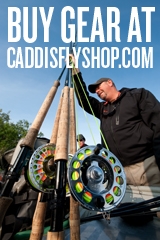Pearsall’s Silk Floss & Fly Tying Threads
No matter how much I learn about the art of fly tying, I find that there is a much larger universe of technique and materials than I have ever or could possibly ever really master.
So it goes with something as simple as fly tying floss and thread. Fresh off a recent Post that compared the properties of three of the most popular fly tying threads Uni, Danville, and Lagartun, a conversation with Marcos Vergara of Hareline Dubbin offered yet another wake-up call that brought the rich diversity of fly tying crashing home.
Pearsall’s Marabou Silk Floss and Pearsall’s Gossamer Silk Thread. At Marcos’ urging, (it didn’t take much) I bought a few spools at the Caddis Fly And went home to give Pearsall’s floss and threads a spin at my bench. Then, via phone and computer, I quizzed Marcos about my new found materials.
Q: Why should I tie with Pearsall’s?
A: Because both the floss and the thread are time-tested materials that have an extremely dedicated following among many of the very best tyers around the world. Because the floss is very fray resistant. Because the floss colors stay true when they are wet or when the thread is cemented. Because they offer some niche colors that are must-haves for Atlantic Salmon flies and traditional soft hackles. Because there are a few tricks to using Pearsall’s that will make your tying more effective and create beautiful effects.
Q: What is different about Pearsall’s Marabou Silk Floss?
A: Take a look at this Jay, Marcos said, unwinding about a 6” section of Scarlet Silk floss. Standing there among the stock shelves at Hareline, Marcos began teasing the floss rope apart. “Check this out.” After clipping off the section, he began teasing it apart, first into three fine strands, and then each strand into two more strands, yielding 6 very fine, very smooth floss strands. I immediately recognized the suitability of this floss to tying different sized flies, from the very smallest, to the more usual #2s and #6s I gravitate to in my summer steelhead flies. Marcos proceeded to run the floss through his fingers, and it stayed slick and smooth. This fray resistance is really a plus for us tyers who have rough, calloused fingers from too many hours at the keyboard. Hummmmmmm.
Note: Hareline offers 8 colors of Pearsall’s Silk floss; my favorites are Scarlet, Lemon Yellow, Highlander Green, and Hot Orange.
Q: What are some of the best features of Pearsall’s Gossamer Silk Thread?
A: This is a very strong thread, probably equivalent to most 6/0 threads. The silk has quite a bit of stretch to it, so it is very forgiving to work with. The silk is colorfast when you apply head cement. And the colors are perfect for both traditional soft hackles and for a lot of the steelhead flies like the Purple Peril. Our steelhead tyers especially like the clarets reds, black, and purple. Soft hackle tyers have a wide range of subtle and bright colors to choose from. And, one of the tricks of the soft hackle trade is to use the tying thread for the body, laying down a slender layer of thread, adding your hackle and finishing the fly, in a flash, you have an elegant, effective, time tested, and …….. my mind was wandering. And by the way, Marcos added, Pearsall’s makes traditional silk threads for wrapping bamboo fly rods, and we sell quite a bit of those threads each year.
Hareline provides at least 24 colors of Pearsall’s Gossamer Silk Thread; my hot ones are Purple, Golden Yellow, Scarlet, Claret, Hot Orange, Grey, and Olive Green.
I have been specializing in salmon, steelhead, and sea run cutthroat flies for many years, but Marcos’ glowing praise of these Pearsall’s flosses and threads got me leaning towards giving the stuff a go. The fact that I gave ALL of my trout hooks to Barrett months ago forced me to pick out a pack of wet fly hooks. Size 13 and #14 hooks looked impossibly small. But I bought the hooks, several spools of Pearsall’s Silk Floss and Thread, and went home to see what I could do. Nice flies, slow going and a big change back to my trout fly roots. Difficult to imagine that once upon a time I tied #20s commercially.
Thanks Marcos. Thanks for introducing me to yet another material that is first rate and expanding my fly tying skill-set. I found the floss to be every bit the charm to work with that Marcos had told me, I whipped out teeny tiny soft hackles as fine as I had ever done in the decades past (at about 25% of my former speed), and the finished flies had just the look that made me smile.
Get ready for some soft hackle videos, Chris!
JN






Good write. On soft hackles and flymphs do you run your thread back through the hackle?
Can’t wait for those soft hackle videos!
Gosh, that makes a lot of sense to you this. Definitely looking forward to the videos. Definitely familiar with the silk thread for rods, but not for tying flies.
“Can’t wait for those soft hackle videos!”
Me either!
I thought Teeny only tied Nymphs……..
Soft hackle videos? What where and when?
when using Pearsall’s silks to tie “North Country Spider pattern’s” you will need some cobbler’s wax which strengthens the thread and helps dubbing to stiff, always dub very lightly so that the thread shows through. A good book to help get pattern right is ” a guide to NORTH COUNTRYFLIES and how to tie them” by Mike Harding,
tight lines
How donI contact hairline,you refer to?